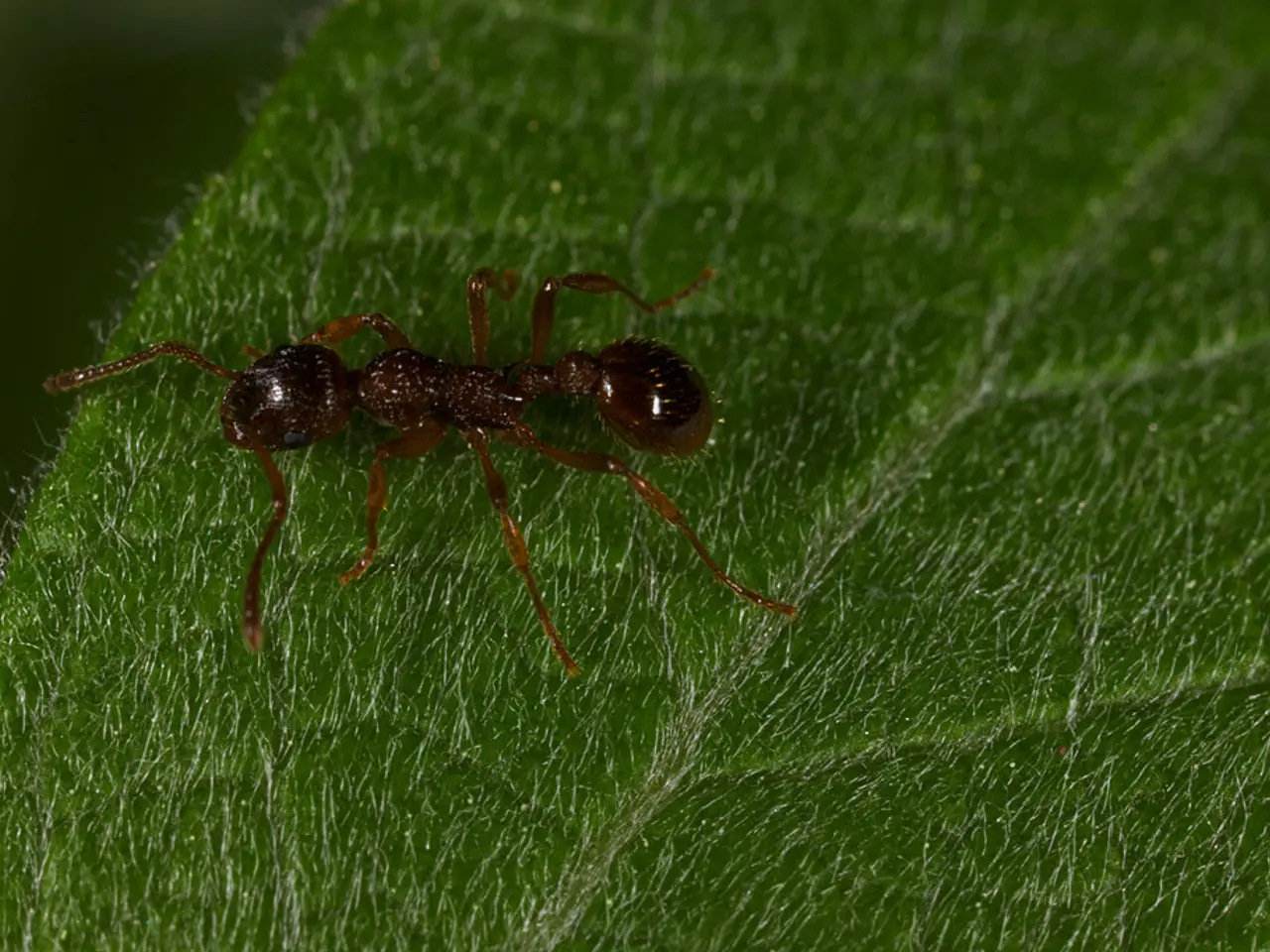Soil Invertebrates in Potted Plants: Identifying Them
Battle Against Root Mealybugs and Fungus Gnats: A Greenhouse and Indoor Plant Owner's Guide
Root mealybugs and fungus gnats are two common pests that can cause significant damage to indoor and greenhouse plants.
Root Mealybugs: The Hidden Threat
Root mealybugs are soft-bodied, oval-shaped insects, barely 1/16th of an inch long, covered in white, waxy secretions resembling cotton or flour [3]. They feed by sucking sap from plant roots, leading to symptoms such as yellowing leaves, slow growth, decline in vigor, and in severe cases, leaf drop and fruit drop [2][5]. These pests are often found clustered in plant soil around roots.
Behaviorally, root mealybugs are usually immobile while feeding but tend to remain concealed in the soil near roots, making them harder to detect than their above-ground counterparts [3]. They excrete honeydew, promoting sooty mold growth on plants, further stressing the host and attracting ants [5].
Treatment and Prevention
Effective control of root mealybugs involves systemic treatments like neem oil drenches and good cultural practices to maintain plant vigor and prevent infestations [2][3][4][5]. Neem oil as a soil drench is a particularly recommended organic and systemic treatment that can protect the plant both externally and internally against root mealybugs and associated pests [4].
| Treatment Method | Description & Use | |-------------------------------|-----------------------------------------------------------------------------------------------------------------------------------------------------------------------| | Neem Oil Soil Drench | Highly effective against root mealybugs. Dilute ~1 tablespoon neem oil + 1/2 teaspoon soap per gallon water. Saturate the root zone every 2–3 weeks until control [4]. | | Pruning Affected Parts | Mainly for above-ground infestations; careful root pruning might help if infestation localized [2]. | | Preventive Care | Avoid plant stress by proper irrigation and nutrition to reduce susceptibility to infestations [2]. |
Fungus Gnats: The Indoor Invaders
Fungus gnats are small, black, flying insects that resemble tiny mosquitoes, around 2.5mm in size. They have long legs, clear or grey wings in a long oval shape, and a Y-shaped pattern in the centre of their wings [1]. Fungus gnats are attracted to light, heat, and scent, and are commonly found hovering or crawling over plants [1].
Fungus gnats are drawn to moist soil and humid conditions, which is why they often infest indoor or greenhouse plants [2]. They lay their eggs in the soil, and the larvae feed on the fungi and organic matter present [1].
While fungus gnats do not directly feed on plant roots like root mealybugs, their presence can indicate poor drainage and excessive moisture, which can lead to root rot and other plant health issues [2].
Controlling Fungus Gnats
For fungus gnats, the best approach is to improve drainage and reduce moisture in the soil. Letting the soil dry out between waterings can help reduce fungus gnat populations [2]. Regularly flushing the soil may also help reduce populations [2].
In conclusion, maintaining healthy, well-draining soil and avoiding overwatering can help prevent infestations of both root mealybugs and fungus gnats. For established infestations, organic treatments like neem oil and cultural practices can help manage these pests and protect your plants.
- Maintaining a balance in plant health and wellness, especially related to soil conditions, is crucial for fighting against not only root mealybugs but also uninvited insects such as fungus gnats.
- In addition to battling root mealybugs with treatments like neem oil and proper cultural practices, ensuring good fitness and exercise for plants through well-draining soil, adequate nutrition, and appropriate watering can aid in the prevention of infestations from both root-feeding pests and flying intruders like fungus gnats.




